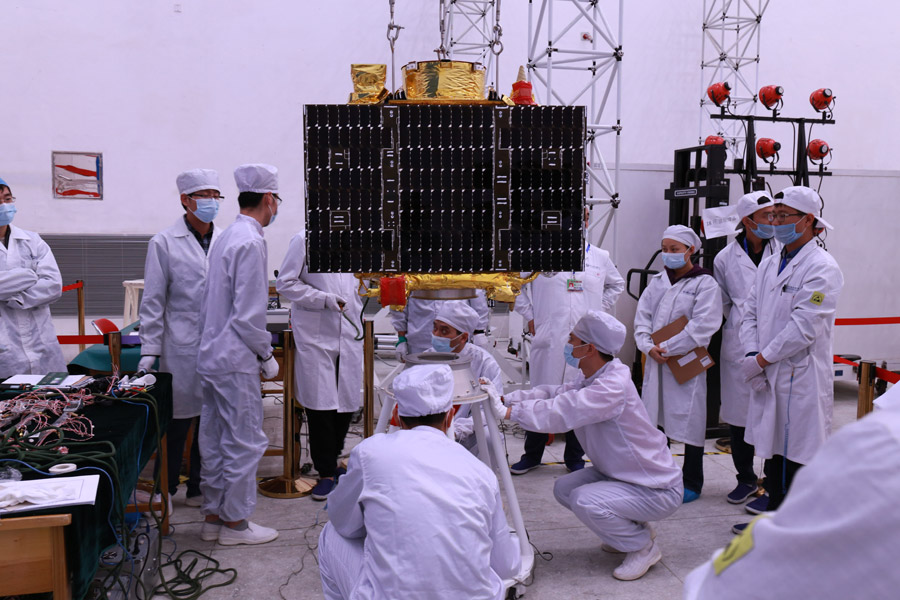Hendrik_2000
Lieutenant General
Watch out Space X here is China's version. Another Chinese private company in space and defense related industry. See at the bottom of this article the story of this firm founded by young people in their 20's
LinkSpace (翎 客 航天), a young Chinese aerospace shoot that aims to create the first private reusable rocket in China, caused Thursday several suspension flights by one of their demonstrators; at their rocket testing site in Longkou, Shandong Province.
Since the first successful test in July 2016, the three demonstrator models built by LinkSpace, including the RLV-T3 , have already carried out more than 200 suspended flights so far.
The company thus becomes the 6th in the world to have mastered this technology, according to , and plans to conduct its first test of take-off and vertical landing by the end of the month.
Founded in January 2014 by a young probe rocket fan, the Chinese startup quickly raised their first fund of 16 million yuan (~ 2 M €) from private investors, and others followed.
The objective of LinkSpace is to launch their first reusable rocket, the New Line 1 , around 2020. A first suborbital test is expected before the end of 2018.
LinkSpace's research and development center in Beijing today includes some 20 researchers and engineers, mostly from state launcher manufacturers such as CALT, and even Chinese rocket forces.
LinkSpace CEO Unveils New Line Launcher 1 (Photo: 翎 客 航天)
The company has already completed the development of a first 3000N variable-thrust rocket engine for a state research institute and also a first nano-satellite, the FMN-1 , for panoramic photography of space with two 4K resolution cameras.
RLV-T3 flight test not very successful (Image: 翎 客 </s>)
According to the presentation by LinkSpace CEO HU Zhen Yu (胡振宇), 24, the New Line 1 rocket is 20.1 meters long, 1.8 meters in diameter and weighs about 33 tonnes on take-off.
The reusable first stage will feature four open-cycle LOX / Kerosene engines with a thrust of 100 kN each. The capacity of the launcher is 150 to 200 kg in an orbit of 250 to 550 km of altitude.
LinkSpace intends to offer their launch service for 30 million yuan (~ 3.8 M €) if the launcher is new, or 15 million yuan in case the launcher is reused.
We are waiting to see if LinkSpace will succeed in carrying out their project to the end, with the arrival of CALT, builder of Longue Marche rockets and genuine giant in comparison, who wants to make next year, with the new solid propellant CZ-11 .
To be continued.
Henri K.
The story of Link space system
LinkSpace (翎 客 航天), a young Chinese aerospace shoot that aims to create the first private reusable rocket in China, caused Thursday several suspension flights by one of their demonstrators; at their rocket testing site in Longkou, Shandong Province.
Since the first successful test in July 2016, the three demonstrator models built by LinkSpace, including the RLV-T3 , have already carried out more than 200 suspended flights so far.
The company thus becomes the 6th in the world to have mastered this technology, according to , and plans to conduct its first test of take-off and vertical landing by the end of the month.
Founded in January 2014 by a young probe rocket fan, the Chinese startup quickly raised their first fund of 16 million yuan (~ 2 M €) from private investors, and others followed.
The objective of LinkSpace is to launch their first reusable rocket, the New Line 1 , around 2020. A first suborbital test is expected before the end of 2018.
LinkSpace's research and development center in Beijing today includes some 20 researchers and engineers, mostly from state launcher manufacturers such as CALT, and even Chinese rocket forces.
LinkSpace CEO Unveils New Line Launcher 1 (Photo: 翎 客 航天)
The company has already completed the development of a first 3000N variable-thrust rocket engine for a state research institute and also a first nano-satellite, the FMN-1 , for panoramic photography of space with two 4K resolution cameras.
RLV-T3 flight test not very successful (Image: 翎 客 </s>)
According to the presentation by LinkSpace CEO HU Zhen Yu (胡振宇), 24, the New Line 1 rocket is 20.1 meters long, 1.8 meters in diameter and weighs about 33 tonnes on take-off.
The reusable first stage will feature four open-cycle LOX / Kerosene engines with a thrust of 100 kN each. The capacity of the launcher is 150 to 200 kg in an orbit of 250 to 550 km of altitude.
LinkSpace intends to offer their launch service for 30 million yuan (~ 3.8 M €) if the launcher is new, or 15 million yuan in case the launcher is reused.
We are waiting to see if LinkSpace will succeed in carrying out their project to the end, with the arrival of CALT, builder of Longue Marche rockets and genuine giant in comparison, who wants to make next year, with the new solid propellant CZ-11 .
To be continued.
Henri K.
The story of Link space system
Last edited:





